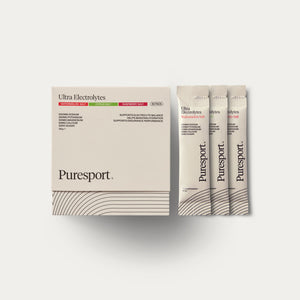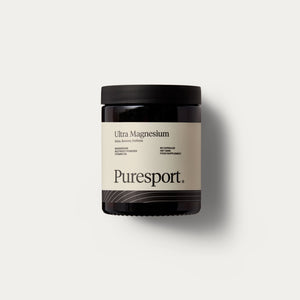The Science Behind What Your Sweat Is Telling You About Your Hydration Needs?
When you exercise, you might think of sweat simply as a sign you’re working hard. But in reality, your sweat is like a personalised hydration report. It’s telling you how much fluid you’re losing, what electrolytes you need to replace, and whether you’re at risk of dehydration — if you know how to read the signs.
In this guide, we’ll explore the science of sweat, how it affects performance, and how you can use that knowledge to stay hydrated, healthy, and performing at your peak.
Why Sweat Exists – And Why It’s So Important
Sweating is your body’s built-in air conditioning system. When your internal temperature rises during exercise, hot weather, or even stress, your sweat glands release a mixture of water and electrolytes onto your skin. As this liquid evaporates, it cools you down.
But there’s a catch: every drop of sweat contains vital minerals your body needs to function. That means high sweat losses without proper replacement can quickly affect your muscles, brain, and energy levels.
What’s Actually in Sweat?
Sweat is about 99% water, but the other 1% is where the hydration science gets interesting:
- Sodium – The main electrolyte lost in sweat; essential for fluid balance and nerve signalling
- Chloride – Works alongside sodium to maintain hydration and pH balance
- Potassium – Helps muscles contract and prevents cramping
- Calcium & Magnesium – Support nerve transmission and enzyme activity
Why it matters: If you only replace water without replenishing electrolytes, you risk diluting your blood sodium levels — potentially leading to hyponatremia, a dangerous condition for endurance athletes.
Why Everyone’s Sweat Is Different
Your sweat profile — both volume and electrolyte content — is unique to you. Factors that affect this include:
- Genetics – Some people are “salty sweaters” and lose far more sodium than others.
- Fitness Level – Athletes often sweat sooner during exercise but may lose fewer electrolytes per drop as their bodies adapt.
- Environment – Hot or humid weather increases sweat rate; dry heat can make losses harder to spot.
- Diet – High sodium diets can raise sweat sodium levels; low electrolyte diets can lower reserves.
- Pre-Exercise Hydration – Starting a workout already dehydrated can make sweat more concentrated.
Signs Your Sweat Is Sending You
Pay attention during and after exercise for these clues:
- Salty streaks or crystals on skin/clothing – Indicates high sodium loss
- Cramping during or after workouts – May signal electrolyte depletion, especially sodium or potassium
- Dizziness, fatigue, or reduced endurance – Can point to both fluid and mineral loss
- Persistent or extreme thirst – The body’s SOS for hydration
The Dangers of Dehydration
Dehydration isn’t just uncomfortable — it’s a performance killer and a potential health hazard. Below are some of the tell-tale signs of dehydration during whilst you are exercising:
Mild to Moderate Dehydration (1–3% body weight loss):
- Reduced strength and endurance
- Slower reaction times and coordination
- Increased heart rate and perceived exertion
- Headaches and difficulty focusing
Severe Dehydration (4%+ body weight loss):
- Heat exhaustion or heatstroke
- Sharp drop in blood pressure
- Confusion, dizziness, or fainting
- Risk of organ damage and, in extreme cases, death
Rehydrating Effectively: More Than Just Water
A strong hydration plan replaces both water and electrolytes. Here’s how to do it:
- Before exercise – Drink regularly throughout the day and top up 30–60 minutes before your session.
- During exercise – For workouts over an hour, especially in heat, use an electrolyte drink to replace sodium, potassium, and other key minerals.
- After exercise – Replenish fluids and electrolytes to speed recovery and restore balance.
For a deep dive into how electrolytes work, how much you actually need, and the best sources for athletes, read Puresport’s Electrolytes Blog.
How to Learn Your Personal Sweat Profile
If you want to go deeper into hydration science, you can:
- Track your body weight before and after workouts to estimate sweat loss
- Notice visible salt marks and how often you cramp
- Use sweat testing services to measure sodium concentration
This personalised data lets you build a hydration strategy tailored to your body’s exact needs.
How to Learn Your Personal Sweat Profile
Your sweat isn’t just a side effect of training — it’s a chemical signal revealing your hydration status and electrolyte needs. By learning to interpret those signs and replacing fluids and minerals effectively, you’ll:
- Maintain peak performance
- Avoid dehydration dangers
- Recover faster and train harder
To unlock your optimal hydration strategy, start by understanding electrolytes — and for that, Puresport’s Electrolytes Blog is the perfect next step.











































































